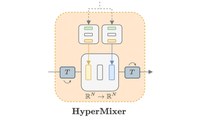Towards energy-efficient artificial intelligence models
Artificial intelligence technologies are getting better and better at understanding the meaning of natural languages. This progress makes a crucial difference for real world applications using text analysis and speech recognition tools. Currently, the most cutting-edge technologies rely on models called transformers, which place significant demands on computing resources. As a result, the number of mathematical operations needed for analyzing longer and longer text and speech signals becomes exceedingly burdensome even with more computing power. Acknowledging this flaw, Idiap’s researchers came up with a strategy to reduce the computational and energy resources needed to run these technologies.
A new model
“When working with resource-demanding algorithms, researchers often have to artificially shorten their inputs to obtain results in a reasonable time-frame. Cutting computing costs is crucial for research and for its applications,” Florian Mai, first author of the paper and research assistant in the Natural language understanding group, explains. To reduce these computing costs, the researchers decided to revisit a decades-old model called multi-layer perceptrons. A model that is usually considered unfit for processing language due to its inability to handle inputs of varying length. However, Idiap’s researchers found that, by switching from a static to a dynamic processing model, language-related data can be processed effectively. They called this model HyperMixer.
More cost effective AI
In addition to their modelling improvement, the researchers were also able to demonstrate empirically that their model performs better or on par with traditional models. In comparison to transformers, HyperMixer achieves these results at substantially lower computing costs in terms of processing time, training data, and parameter tuning.
Beyond this scientific achievement, HyperMixer takes an important step in the direction of diminishing the environmental impact of AI technologies. In an era where energy costs are skyrocketing and resources are dwindling, it is crucial for research to contribute. “Idiap’s motto AI for society must also be reflected in algorithms,” James Henderson, head of the Natural language understanding group, concludes.
“HyperMixer: An MLP-based Low Cost Alternative to Transformers” was presented at ACL 2023 in Toronto. “HyperConformer: Multi-head HyperMixer for Efficient Speech Recognition” will be presented at InterSpeech 2023 in Dublin on August 22.
More information
- Natural language understanding research group
- “HyperMixer: An MLP-based Low Cost Alternative to Transformers” Florian Mai, Arnaud Pannatier, Fabio Fehr, Haolin Chen, François Marelli, François Fleuret, James Henderson
- “HyperConformer: Multi-head HyperMixer for Efficient Speech Recognition” Florian Mai, Juan Zuluaga-Gomez, Titouan Parcollet, Petr Motlicek
- Code for both these models
